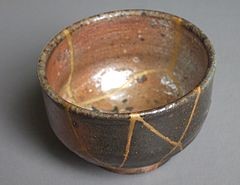
Erica Reid, QNIS Trustee
Erica Reid is a Trustee of QNIS, Executive Coach and an IHI/Health Foundation Quality Improvement Fellow. Erica’s blog relates the Japanese art of Kintsugi to successful project planning, a task often met with unpredictability and the need for careful consideration. She explains why being accepting of failure is the only real way to nurture improvement and find lasting success.
In March I was asked to present to the nurses and midwives who are leading Catalyst for Change projects, supported by QNIS in partnership with the National Lottery Community Fund. This year’s projects range from supporting recovery of young people with mental illness to providing accessible information for parents with learning disabilities. My brief was to offer insights on how to lead successful improvement projects.
Over the last few decades, I have worked at strategic and operational levels on improving the quality of care and treatment for those who use health and social care. Some of these improvement programmes have been successful, while others did not achieve their intended outcomes. What could I share that would help the Catalysts for Change project leads as they developed their projects? What was my experience of the common themes that created successful improvement?
On reflection, I realised that each of the projects I was involved in was different in context, method and location, but they did have one thing in common. Even the most successful projects were rarely delivered as the project teams originally envisage. They were all perfectly imperfect. This brought to mind the Japanese concept that recognises and values the beauty of imperfection – wabi-sabi.
When I explored more about wabi-sabi I found that it is inextricably linked with Kintsugi, the art of repairing broken items with gold lacquer. Imagine a pottery bowl that has been in your family for a couple of generations but disaster strikes, your friend’s toddler breaks it when visiting (before the lockdown of course). Our western way of dealing with this is typically to be devastated and throw away the broken bowl or try and repair it with transparent glue in a vain attempt to hide the cracks. A Kintsugi artist has a different approach. They will take the fractured object and mend it respectfully while highlighting its brokenness. The cracks are emphasised by filling them with golden lacquer, and the repair becomes a precious part of the bowl’s history.

A bowl repaired by Kintsugi, image from Wiki Commons
I found this a useful metaphor when reflecting on leading improvement projects. Like a Kintsugi bowl, the systems we are working to improve were once whole and perfect for their purpose. However, as time passes systems often become broken, not through intention, but through normal progression. These fractured pieces in any system are precious and their part in improvement have to be respected and acknowledged. The seams of gold that can put these fragments back together again are the voice of people: the voice of those who work in the system, and importantly the voice of those who access it for care or treatment.
In my presentation, I used the image of a Kintsugi bowl as a visual reminder of what I call ‘respectful improvement’. In my experience the ingredients of respectful improvement are:
- Active and intentional listening
- Using people’s stories and experience to develop tests of change
- Learning and making the system even better by proactively seeking feedback on any changes from both those who work in and those who experience the system
As the Catalyst for Change leaders strive for excellence, they may find their projects, although fulfilling their planned purpose, may not be as they originally envisaged. Like a Kintsugi artist, they will have achieved success if they have respectfully brought together all the pieces with seams of gold.
For more information on Catalyst for Change Projects supported by QNIS in partnership with the National Lottery Community Fund please click here.

